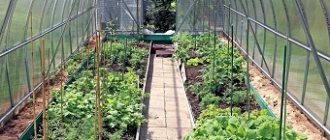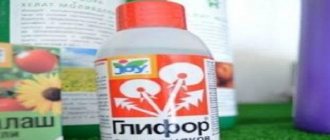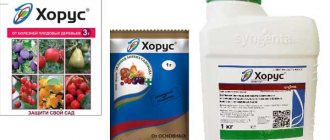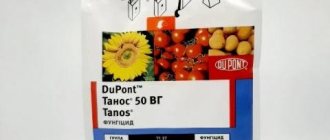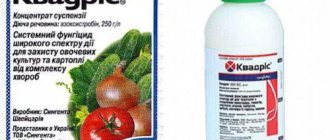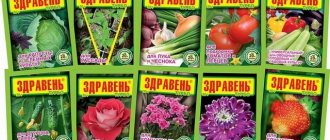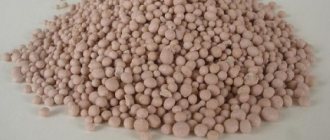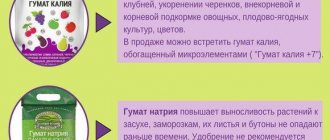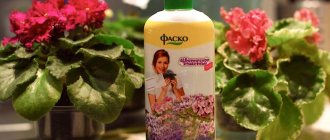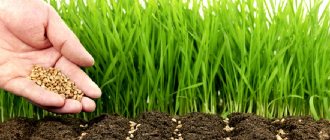To obtain a stable harvest, plants require not only protection from diseases and pests, but also additional feeding. The Sudarushka fertilizer can cope with this task; with its help you can significantly increase the size and number of fruits.
Application
One of the advantages of the composition is its easy application. Simple instructions are printed directly on the packaging.
Root feeding
For 10 liters of water take one teaspoon of the composition. Plants are watered in the morning or evening. The soil must first be watered with clean water.
Root feeding is carried out four times:
- Half a month after transferring the seedlings to a greenhouse or outdoor garden bed.
- During budding tomato.
- During mass tying.
- At the stage of filling the bulk of the fruit.
For 3 sq. m pour out a 5-liter bucket of fertilizer solution.
Foliar feeding
The fertilizer is absorbed very quickly when applied to the leaves. It is enough to carry out foliar feeding twice a season, supplementing the application of fertilizer at the root.
Foliar application of fertilizers is suitable for pronounced nutritional deficiency, which rarely happens if the plant was previously watered with Sudarushka at the root. In cold weather, tomato roots cannot fully absorb nutrients from the soil, and the bushes begin to suffer from hunger. Foliar feeding will correct the situation.
If plant leaves change color to anthocyanin or pale green, it means they are lacking phosphorus and nitrogen. These substances are contained in abundance in Sudarushka and are absorbed as soon as they fall on the leaves.
An acute shortage of microelements causes defects in the development of the bush, reduces productivity, and can even result in the complete death of all plants. In such cases, the leaves are sprayed with a weak solution of Sudarushka, and the plants come to life before our eyes.
Article on the topic: Zdraven cucumbers turbo - reviews, description
To prepare a nutrient solution you will need 2 g of fertilizer and 10 liters of water.
- Warm water left in the sun is poured into a plastic bucket.
- Pour in 2 g of Sudarushka.
- Mix thoroughly.
- The fertilizer must be completely dissolved.
The solution is poured into a sprayer and applied to the leaves of tomatoes, trying to get it not only on the top, but also on the bottom, from where it is absorbed faster and more completely.
Fertilizer is stored where children and pets cannot reach it. Powdered and liquid Sudarushka should be kept at a temperature of about 25 degrees. Freezing will cause the composition to lose some of its beneficial properties. The shelf life of dry fertilizer is unlimited. The liquid should be used within 24 hours after dilution.
Storage
Keep the fertilizer out of the reach of children. The room temperature should not exceed +25 degrees Celsius, and the humidity should not exceed 70%. If storage recommendations are followed, the shelf life of the dry substance is unlimited. The diluted solution is used within 24 hours after preparation.
Fertilizer Sudarushka - universal fertilizer for garden crops
Every gardener and gardener wants to get a bountiful harvest from his plot. But this depends not only on desire and hard work, but also on the degree of depletion and fertility of the soil, on the speed of restoration of the humus layer. In addition, plants should be protected from pests and diseases. Therefore, it is impossible to do without various additives and fertilizers to obtain a good harvest. One of the most effective preparations is the Sudarushka brand fertilizer. It is intended for feeding tomatoes and other vegetable crops.
Instructions for using Sudarushka-Tomato fertilizer
- Root feeding. To carry out fertilizing, a working solution is prepared in the ratio of 4 g of fertilizer (1 teaspoon) per 10 liters of water. It is better to fertilize in the morning or evening hours according to the table presented:
Growing season of plants
Required consumption rate of working substance
Required amount of treatment
10-15 days after the seedlings are planted in the ground
From 3 to 5 liters of solution per 2-3 sq.m.
Budding phase – beginning of flowering
From 3 to 5 liters of solution per 2-3 sq.m.
Fruit formation period
From 3 to 5 liters of solution per 2-3 sq.m.
- Foliar feeding. Cultivated crops are sprayed 2-3 times per season in cloudy but not rainy weather, in the morning or evening. The spraying solution is prepared based on the norm - 2 g of fertilizer (1/2 teaspoon) per 10 liters of water.
Composition of the drug and for which crops it is suitable
Sudarushka fertilizers are a series of complex fertilizers for vegetables, herbs and even berries. The fertilizer contains the optimal amount of macro- and microelements that stimulate rapid growth and prevent various diseases of vegetables, herbs and berries.
The main composition of the drug:
- nitrogen,
- phosphorus,
- potassium,
- zinc,
- copper,
- manganese,
- cobalt,
- molybdenum,
- boron
The drug is available in dry and liquid form. The following brands of fertilizer are distinguished:
- Sudarushka-tomato – feeding for tomatoes, eggplants, peppers and other vegetables.
- Sudarushka-cabbage is intended for fertilizing all varieties and types of cabbage.
- Cucumber sudarushka is suitable for cucumbers and zucchini, as well as melons.
- Sudarushka-universal – feeding for greens and vegetables.
- Sudarushka-for garden crops is great not only for all vegetables, but it is also used to fertilize berries, in particular strawberries. This fertilizer contains all the substances necessary for a good berry harvest.
How can I replace the Sudarushka fertilizer?
As an alternative, the following compositions can be used:
- "Ammophos"
. Sold in the form of granular balls that easily dissolve in water. Fertilizing is carried out during the growing season. - "Nitrophoska"
. Like fertilizer for tomatoes, “Sudarushka” is used for the active growth of any crop. The recommended norm is 75 g/m² of soil. - "Azofoska"
. Sold in granules. Can be applied dry or dissolved. - "Diammofoska"
. The composition is saturated with a large number of microelements. The granules dissolve well in liquid. For greenhouses, the amount of Sudarushka fertilizers used is almost twice as much as for open ground. - "Ammophoska"
. Used for different soils. Used during planting, as the main fertilizer and additional feeding.
Signs of a lack of mineral supplements
There are a number of signs by which experienced gardeners can understand that their crops need additional feeding:
- slow growth and development of plants; apical bud and flaccid leaves;
- a large number of barren flowers;
- brown, yellow, whitish spots appeared;
- dull leaves;
- The ovaries began to fall off.
Some symptoms even suggest which substances the plant lacks:
- a lack of nitrogen is indicated by a poor harvest and yellowing leaves;
- lack of phosphorus is manifested in a change in leaf color to reddish-brown or purple;
- fruits that lack potassium have a deteriorating taste.
How to use Sudarushka fertilizer in the garden to improve productivity
Post by maschu » Tue Aug 13, 2013 7:30 pm
Sudarushka is a time-tested mineral slow-acting fertilizer from the “Garden Pharmacy for Garden and Vegetable Garden” series, with all the macro- and microelements necessary for crops. These fertilizers can be used for root and foliar feeding. The Garden Pharmacy series includes complex mineral and organic fertilizers, products for increasing plant productivity, monitoring and improving soil quality, insecticides and fungicides produced in Russia. Garden Pharmacy fertilizers are an integrated approach for high and sustainable yields. The effectiveness of our products is confirmed by many years of experience of amateur gardeners. Mineral fertilizers of the Garden Pharmacy series: Sudarushka Cabbage - complex mineral fertilizer for all types of cabbage. Sudarushka Cucumber is a complex mineral fertilizer for cucumbers, zucchini, and melons. Sudarushka Tomato is a complex mineral fertilizer for tomatoes, peppers, and eggplants. Sudarushka Garden greens is a complex mineral fertilizer for vegetable and green crops. Sudarushka Universal is a complex mineral fertilizer for vegetables and green crops.
Application of "Garden Pharmacy" fertilizers The effectiveness of fertilizers for vegetables and potatoes largely depends on the timing and methods of their application. There are three methods of applying fertilizers: pre-planting main application of fertilizers (in autumn or spring before sowing) pre-sowing (in rows or holes during sowing) fertilizing (during the growing season of plants) Basic pre-planting application of fertilizer. To obtain high yields, it is necessary, first of all, to have a good basic filling of the soil with fertilizers and a small dose of fertilizers, especially phosphorus, to nourish the plants during the initial growing season. To do this, fertilizer is distributed over the entire surface of the bed (according to the instructions) before sowing or planting seedlings, then the bed is dug up and formed. The fertilizer should be incorporated into the soil to a depth of 14-18 cm, where the most favorable moisture conditions exist. This promotes good use of fertilizers by plants. Pre-planting fertilization gives plants a healthy and strong start and ensures even and uniform growth.
Pre-sowing fertilizer. Row fertilizer during sowing is most promising for early and small-seeded vegetable crops (radish, lettuce, radish, turnip, dill, parsley, carrots). Fertilizer applied to the rows significantly increases the field germination of seeds, enhances plant growth in the initial period and increases the yield of early (bunch) products. For many vegetable crops, fertilizers are applied using the belt method, which allows you to obtain high yields and save fertilizers.
Plant nutrition. Fertilizing is an auxiliary method of fertilizing and cannot replace the main one. However, there is no need to refuse fertilizing, since it has a positive effect in case of lack of plant nutrition during the growing season, unfavorable climatic conditions, leaching of nutrients on light soils by precipitation or watering, etc. The most effective technique is fertilizing with irrigation water, to which cucumbers, tomatoes, green and perennial vegetable crops respond well. Mineral fertilizers Sudarushka Universal, Sudarushka Tomato, Sudarushka Cucumber, Sudarushka Garden Greens are perfect for such fertilizing.
Read also: BioMaster fertilizer - instructions for use and characteristics
Sudarushka Cucumber 60g is a chlorine-free, water-soluble fertilizer with the optimal amount of micro- and macroelements for root and foliar feeding of cucumbers. DESCRIPTION Balanced universal slow-acting mineral fertilizer for feeding, preventing fungal diseases and increasing the productivity of open and closed ground: cucumbers, zucchini, melons
COMPOSITION Macroelements: nitrogen – 15%, phosphorus (P2O5) – 6.0%, potassium (K2O) – 6.7%. Microelements: boron – 1.6%, copper – 1.1%, zinc – 0.16%, molybdenum – 0.045%, cobalt – 0.045%, manganese – 2.5%.
DOSAGE AND METHOD OF APPLICATION Signs of a lack of microelements in plants: withering of the apical bud and young leaves, the appearance of yellow or brown spots, a decrease in the intensity of leaf color.
Root feeding. Prepare a working solution at the rate of: 1 teaspoon of fertilizer (4g) per bucket of water (10l). Feed in the morning or evening in accordance with the table: Phase of plant development Consumption rate of working solution Frequency of treatments 3-5 true leaves 2 l per 2-3 m2 1 Formation of lashes 2-3 l per 2-3 m2 1 Budding - beginning of flowering 2-3 l per 2-3 m2 1 Formation of fruits 2-3l per 1m2 1
Foliar feeding. Plants are sprayed with the solution in the morning or evening in cloudy, non-rainy weather 2-3 times per season.
PRECAUTIONARY MEASURES Work in hand, respiratory and eye protection. When finished, wash your hands with soap. Store separately from food in a dry place, out of reach of children and animals. In case of contact with eyes or skin, rinse with plenty of water. In case of poisoning, consult a doctor and have the label with you. Hazard class - 3 (moderate hazardous compound).
PACKAGING The product is packaged in a package made of a combined polymer film, weight 60g. There are 120 pcs in one transport box
STORAGE CONDITIONS Store the product in a dry and cool place, at a temperature not exceeding 25°C and humidity not exceeding 75%. The shelf life is unlimited if the conditions are met.
NUTRIENT CHARACTERISTICS Nitrogen - provides strong growth. Symptoms of deficiency: yellowed leaves, low yield. Phosphorus (P2O5) - promotes the formation of flowers and fruits, accelerates ripening, and is important for root growth in spring. Deficiency symptoms: leaves turn purple to red-brown. Potassium (K2O) - enhances growth, increases the strength of cell tissue, resistance to cold and plant resistance to other unfavorable factors. Symptoms of deficiency: poor growth, yellow-red coloring of the leaf edges, deterioration in the taste of vegetables and fruits.
Advantages and benefits of fertilizing
Sudarushka fertilizer of all varieties has many advantages that distinguish it from other similar mineral additives. Namely:
- prevents the occurrence of a number of diseases;
- provides effective treatment of existing diseases;
- stimulates the growth and ripening process of fruits;
- prevents the fall of the ovaries;
- prevents the occurrence of barren flowers;
- improves the appearance and taste of fruits;
- crops treated with the drug are well transported;
- has a low cost.
In addition, fertilizer is very economical. From one sachet of 60 g of the drug, 150 liters of solution are made. And even an already opened package can be stored for a long time in a cool and dry place. The drug requires compliance with the temperature regime up to + 25ºС. Humidity should not exceed 75%. If all these conditions are met, the shelf life of the drug is unlimited.
Article on the topic: FERTIKA Crystal for violets - reviews, description
Useful tips
These tips will help you purchase the right fertilizer, use and store it correctly, and apply:
- buy fertilizers only from trusted suppliers;
- pay attention to the appearance of the plants; pale or yellow leaves, a dry border around the edges may indicate a deficiency of nutrients;
- When storing an open package, it must be tightly closed;
- It is recommended to alternate mineral fertilizers with organic ones;
- To increase seed germination rates, you can fertilize the soil with Sudarushka even before planting.
Features of root and foliar feeding
All types of fertilizer are suitable for processing vegetables in closed and open ground. Fertilizing cucumbers, tomatoes, cabbage and other vegetables becomes more effective if accompanied by watering. Treatments are carried out several times during the growing season.
Advice. To enrich the soil with minerals and increase productivity, fertilize the soil before sowing and immediately during sowing of vegetable crops.
Root feeding is carried out as follows:
- Prepare a solution: 1 tsp per 10 liters of water. (4 g) fertilizers.
- Water with the solution in the morning or evening.
The saturation of the solution and the watering regime are the same for all vegetable crops. However, each crop has its own characteristics of treatment with Sudarushka fertilizer.
Cucumbers are processed when:
- 3-5 leaves will appear - 1 time, 2-3 l. by 3 m²;
- lashes will appear - 1 time, 2-3 l. by 3 m²;
- fruits will appear - 1 time, 2 l. per 1 m².
Tomatoes and other vegetable crops are fertilized with:
- after planting seedlings 10-15 days later - 1 time, from 3 to 5 liters of solution per 2-3 m²;
- after the start of flowering - 1 time, from 3 to 5 liters of solution per 2-3 m²;
- after the fruits appear - 1-2 times, 3 to 5 liters of solution per 2-3 m².
Foliar feeding is carried out by spraying the plant sprouts with a solution. To do this, prepare the following solution: 2 g (1/2 tsp) of the drug per 10 liters of water. Spraying mode: 1-3 times a season in the morning or evening. Do not spray in rainy weather.
Thus, Sudarushka fertilizer is an effective mineral product that helps increase the productivity of garden crops. Fertilizer also prevents the occurrence of diseases in plants.
When to use Sudarushka fertilizer?
It is better to fertilize along with watering the plants. The soil can be either closed or open. Top dressing "Sudarushka" is designed for use during the growing season. To get the desired result, you need to do everything on time. The sudarushka is introduced for the following time:
- Before landing. It is necessary to distribute the complex fertilizer “Sudarushka” throughout the garden bed and carefully dig the soil to a depth of 20 cm. Such manipulations will help fill the soil with useful substances.
- During landing. Fertilizing at this stage is important for early and small-seeded vegetable crops (radish, lettuce, turnips, parsley and carrots). The applied fertilizers significantly increase the germination of seeds and enhance plant growth and, as a result, the harvest.
- During the growing season. At this stage, feeding replenishes the lack of nutrients. It is recommended to use the Sudarushka fertilizer during watering, this will help them get to the roots faster and be more easily absorbed by the crop.
Composition and form of fertilizer
Vegetable and fruit crops absorb the maximum amount of land resources during growth and development. These are not only vitamins or chemical elements in the form of potassium, nitrogen, and others.
It is difficult for the soil to recover in a short period of time, since this is impossible during the winter period. It takes at least a year, or even two, to replenish the topsoil. Therefore, additional substances are required that can speed up the healing process.
Sudarushka is a universal fertilizer that is recommended for use on greens and vegetable crops. With its help, plants are fully formed, and the earth does not lose large amounts of elements. The product does not contain chlorine, but only macro- and microelements:
The fertilizer is available in several versions. Which one to purchase should be decided in advance by studying the instructions for use and purpose. Types of Sudarushka are selected according to the need for application: crop, soil class. Complex feeding differs in composition, but only slightly (the percentage of the main components is changed).
Article on the topic: Zdraven AQUA CABBAGE - reviews, description
Sudarushka is most often found on sale in powder form. The standard package is 60 g, but sometimes they offer to buy it in liquid form. This is not fake.
Although you should check the authenticity of any product for gardening use. Before application, the dry and liquid forms will need to be diluted in water. Dosage and precautions when working with fertilizer are on all packages.
Description of the drug
Sudarushka is a series of fertilizers for vegetables, herbs and berries. Each composition is developed taking into account the needs of specific plants for macro- and microelements.
Fertilizing with Sudarushka stimulates growth and development, prevents diseases, and completely covers the plants’ need for nutrients.
The composition for feeding tomatoes contains macroelements (NPK) and microelements - zinc, copper, manganese, cobalt, molybdenum, boron. Sudarushka tomato is suitable for other nightshades - eggplant, physalis, bitter and sweet peppers. It is available in liquid and powder form.
The importance of macronutrients and for which plants they are needed
All plants, without exception, require nitrogen, phosphorus and potassium. This is where the development of fertilizer mixtures arose, where the main element exceeds the other components in percentage terms. Sudarushka in this sense is a universal remedy, since it includes all of them:
- For heavy soils, it is vital to add potassium regularly. With its help, sap flow increases, and cell membranes become more elastic. This helps the plant tolerate increases and decreases in temperature. In combination with nitrogen and phosphorus, its beneficial properties are enhanced.
- The benefits of phosphorus are as follows: increased yield, strengthened immunity. The root system needs this macronutrient as it strengthens. Phosphorus helps nitrogen to be absorbed and released into the soil evenly.
- The last macronutrient that vegetable crops constantly need is nitrogen. The main quality is the ability to increase vegetative mass, which takes an active part in the production of proteins, acids and chlorophyll.
The remaining components of the drug are also required for the full development of crops, but the need is insignificant. Much depends on the type of culture. Therefore, Sudarushka manufacturers suggest using:
- Universal or complex fertilizer Sudarushka. The development allows greens such as hyssop and dill, basil and parsley, spinach and celery to develop quickly. At the same time, become a useful vitamin cocktail. The option is also suitable for vegetable crops.
- Sudarushka for cruciferous vegetables. Fertilizer is used for all types of cabbage. Including kohlrabi and savoy, cauliflower and red cabbage. The name speaks for itself: Sudarushka Cabbage.
- There is a separate fertilizer for cucumbers and tomatoes. “Cucumber Sudarushka” is suitable for squash, zucchini, melons, and zucchini. “Tomato” is for nightshades.
All types of fertilizer are available in any agricultural store. Therefore, you won’t need to spend a lot of time searching for what you need.
Important! There is no separate fertilizer for berry crops (strawberries, strawberries). Sudarushka Universal has a suitable composition. It will help strengthen the functioning of the plants’ immune system and increase yield. Make berries more attractive in taste and appearance.
Advantages of Sudarushka
Also check out these articles
- We sow in the summer to enjoy the spring
- Kalanchoe description
- Arsenic in drinking water leads to illness
- Herbicide Herbitox
Very often, gardeners choose Sudarushka fertilizer for garden plants. But what are its positive qualities?
Photo of fertilizer Sudarushka Cucumber
- The drug stimulates the growth of crops and shortens the ripening period of the crop.
- Prevents the formation of barren flowers and the fall of ovaries.
- Fruits treated with Sudarushka are stored much better and their transportability improves.
- Improves the taste and appearance of the crop.
- This is an affordable tool, both in price and in prevalence.
In addition, Sudarushka fertilizer can prevent or treat fungal diseases.
Signs of micronutrient deficiency
Sudarushka is a remedy that can increase one or all important components in the soil (afk). But before carrying out the procedures, you should make sure that the application is necessary. To do this, tests are carried out (soil sampling) or the shortage is determined by indirect signs:
- the plant develops slowly with all necessary procedures;
- leaves and green part, buds fade;
- the presence of numerous barren flowers;
- the foliage turns yellow. Brown spots often appear;
- the stem and foliage become pale in color.
To understand which element is not enough. The farmer can use the following list:
Reviews
Margarita. Before I started using the Sudarushka for tomatoes, I studied reviews on all forums and websites of agricultural products. I must say that I did a whole study. The inexpensive product was recommended by all users. Described as effective. The first results were noticeable immediately. During the season, I harvested twice as much as in previous years. Although I used other fertilizer mixtures.
Basil. I encountered a big problem - late blight. Sudarushka was recommended as a top dressing and a drug that can strengthen the immunity of plants. In combination with the medicine that I used, it proved to be an effective assistant. My pets quickly recovered after suffering from the disease.
>
Description and composition
Fertilizers “Sudarushka” from the series “Garden Pharmacy for Gardens and Vegetable Gardens” are domestically produced goods. They are produced by , which has been working in the field of agriculture since 1996.
There are several types of fertilizers in the Sudarushka line:
The latter is sold in liquid form, the rest in the form of dry granules. One pack weighs 60 g. This amount is enough to prepare 150 liters of working solution. The packaging indicates the detailed composition and method of use.
Each fertilizer has a different ratio of chemical elements. The components are selected taking into account the needs of a specific group of plants.
Sudarushka fertilizers do not contain chlorine, the excess of which is detrimental to vegetable crops.
The detailed composition of each type is presented in the table.
Importance of minerals
It is impossible to get a good harvest by relying only on the natural supply of nutrients in the soil, especially with long-term cultivation of crops in one area.
The most important minerals for normal growth are:
- Nitrogen is responsible for the set of vegetative mass, participates in the production of chlorophyll, proteins, and nucleic acids. Is in constant motion. With the onset of heat, its concentration increases sharply. But the substance quickly goes to depth during rain or watering, so it is systematically applied throughout the season, especially in the first half, when the above-ground part of the plants is being formed.
- Phosphorus – increases productivity and increases resistance to various diseases. With sufficient intake, the root system is strengthened. It branches more strongly and feeds plantings from deep layers of soil. Phosphorus balances the action of nitrogen.
- Potassium – enhances sap flow, increases the elasticity of cell membranes, drought and frost resistance. The need for this element increases with good soil nutrition with phosphorus and nitrogen. On heavy soils, potassium must be added constantly.
Plants also need boron, cobalt, molybdenum, iron, manganese, copper and zinc in small quantities. These elements take part in carbohydrate, protein and nucleic acid metabolism, the synthesis of vitamins, respiration, and normalize oxidative and reduction processes.
For which crops is Sudarushka suitable?
The series of fertilizers under consideration contains preparations for several types of garden crops. You can guess their purpose by their name:
- “Tomato” – for the nightshade family: tomatoes, eggplants, peppers.
- “Cucumber” is for pumpkin and its closest relatives. These include cucumbers, melons, zucchini, zucchini, and squash.
- “Cabbage” – for representatives of the cruciferous family (white cabbage, savoy, red and cauliflower, broccoli, kohlrabi, etc.).
- “Universal” and complex fertilizer - meets the needs of most types of greens (dill, parsley, celery, spinach, basil, hyssop) and vegetables.
These fertilizers can be easily purchased at any gardening store.
Universal fertilizers are suitable for garden strawberries and wild strawberries. The mineral elements included in the products increase productivity, the berries become larger and tastier.
Advantages
The main advantages of Sudarushka fertilizers are their positive effect on vegetable crops. When used correctly you will notice:
- reduction in the number of barren flowers;
- acceleration of plant development;
- rapid fruit ripening;
- stopping the fall of the ovaries;
- improving the quality of the harvest (vegetables are better stored, tolerated well
- transportation, acquire a pronounced taste and pleasant smell);
- increased resistance to a number of diseases.
Low cost makes fertilizers accessible to all categories of the population.
To get the desired effect, adhere to a certain schedule and fertilize the soil as written in the instructions.
Sudarushka fertilizer for tomatoes: reviews and price
fertilizer sudarushka + for tomatoes reviews price
There are several significant signs that immediately indicate that the plant needs additional feeding. Sudarushka is exactly the remedy that is promptly introduced so that the plant receives the most necessary components and does not lose its life. Signs that indicate that the plant simply needs the addition of macronutrients are the following:
- the plant slows down its growth and development, and this can happen even when the gardener essentially performs all the necessary procedures;
- the green part of the plant, its leaves and branches begin to gradually fade;
- numerous barren flowers indicate that some kind of disturbance has occurred in the plant, and it should be corrected;
— the foliage turns yellow and may fall off. Pathological spots of different colors appear on the leaves, which indicate that the plant needs some components;
- the stem and foliage turn pale, become wilted, and reflect lack of vitality.
The type of feeding is determined in accordance with the signs the plant exhibits. Of course, it is also important to consider what category the plant belongs to, its age, stage of development (flowering, growing season). All this influences the choice of one or another feeding principle, so it is imperative to take into account such aspects so that feeding does not cause harm to the plant, but only benefit and positive effects.
There are several ways to use Sudarushka fertilizer in practice. In order to apply fertilizer correctly, you should read the instructions for use very carefully, since if you do not attach importance to it, you can cause irreparable harm to the plant. The instructions usually describe all the advantages of the drug, as well as its disadvantages, fertilizer application schedule and dosage. The shelf life of Sudarushka is also indicated, because a product that is already expired does not contain any useful or nutrients.
It is important to remember that fertilizer is applied exclusively during the growing season. Sudarushka will also benefit if you lightly fertilize the soil before sowing seeds or planting ready-made seedlings in the ground. If the fertilizer was applied in the autumn, then you can hardly expect any benefit from it: the beneficial substances will not have their effect.
Sudarushka can be applied in two ways - foliar or root feeding. In dry form, the drug can harm the plant, so Sudarushka is best suited if diluted with water and irrigated the plant.
If we are talking about root application, then it is necessary to prepare a working solution. Usually this is done either for five or ten liters at once. It is better to measure the dosage with a measuring spoon. Five liters will require two grams of the substance, and ten liters - twice as much, respectively. The liquid should be mixed very thoroughly, making sure that the substance is completely dissolved in water. Watering plants can be done either early in the morning or in the evening, after sunset. The application of the drug depends on the plant:
- tomatoes and cabbage should be processed a couple of weeks after the seedlings have been sent to open ground, and should be watered once. When the fruits are formed, you can apply the drug twice with a break of a couple of weeks. The dosage remains exactly the same as when plants are flowering;
- cucumbers and zucchini - they should be fed once, as soon as the very first independent leaves appear on them. They are fed one more time when the lashes appear, then when flowers and ovaries appear. Finally, the fourth feeding is carried out when the cucumbers or zucchini have entered the fruiting stage.
There is also another method - foliar application - the calculation for diluting the powder is made not by the square of the area, but by how the plant can become completely wet, since foliar application assumes that the fertilizing should completely envelop the plant, so that through its green part and stems it is like It was absorbed inside as quickly as possible and gave its positive effect.
During the season, foliar treatment can be carried out no more than twice. The third is required only if the plant demonstrates by its appearance that it does not have enough added components. However, it is worth remembering that the foliar method is very risky - it can even harm the plant. Therefore, it is best to spray the fertilizer, but ensure the uniformity of the spray layer.
Thus, we reviewed the Sudarushka fertilizer for tomatoes reviews. It has a large number of positive qualities that make this fertilizer one of the most popular and best on the modern market. It should also be remembered that when using any drug, it is necessary to observe safety precautions and protect the mucous membranes from contact with the components of the drug. If used correctly, follow the instructions, store the drug in a dark and dry place, it will bring great benefits to a wide variety of species and types of plants. At the same time, gardeners need to remember that even fertilizers can sometimes harm plants. Mostly, this happens when the gardener neglects to study the instructions, and as a result damages the foliage and overfeeds the plants. Because of this, they begin to feel even worse, the root system begins to fade, the appearance of the plant also literally screams that it needs a change in the feeding schedule, or even a change in the feeding agent.
Description and composition
Fertilizers “Sudarushka” from the series “Garden Pharmacy for Gardens and Vegetable Gardens” are domestically produced goods. They are produced by , which has been working in the field of agriculture since 1996.
There are several types of fertilizers in the Sudarushka line:
The latter is sold in liquid form, the rest in the form of dry granules. One pack weighs 60 g. This amount is enough to prepare 150 liters of working solution. The packaging indicates the detailed composition and method of use.
Each fertilizer has a different ratio of chemical elements. The components are selected taking into account the needs of a specific group of plants.
Sudarushka fertilizers do not contain chlorine, the excess of which is detrimental to vegetable crops.
The detailed composition of each type is presented in the table.
Importance of minerals
It is impossible to get a good harvest by relying only on the natural supply of nutrients in the soil, especially with long-term cultivation of crops in one area.
The most important minerals for normal growth are:
- Nitrogen is responsible for the set of vegetative mass, participates in the production of chlorophyll, proteins, and nucleic acids. Is in constant motion. With the onset of heat, its concentration increases sharply. But the substance quickly goes to depth during rain or watering, so it is systematically applied throughout the season, especially in the first half, when the above-ground part of the plants is being formed.
- Phosphorus – increases productivity and increases resistance to various diseases. With sufficient intake, the root system is strengthened. It branches more strongly and feeds plantings from deep layers of soil. Phosphorus balances the action of nitrogen.
- Potassium – enhances sap flow, increases the elasticity of cell membranes, drought and frost resistance. The need for this element increases with good soil nutrition with phosphorus and nitrogen. On heavy soils, potassium must be added constantly.
Plants also need boron, cobalt, molybdenum, iron, manganese, copper and zinc in small quantities. These elements take part in carbohydrate, protein and nucleic acid metabolism, the synthesis of vitamins, respiration, and normalize oxidative and reduction processes.
For which crops is Sudarushka suitable?
The series of fertilizers under consideration contains preparations for several types of garden crops. You can guess their purpose by their name:
- “Tomato” – for the nightshade family: tomatoes, eggplants, peppers.
- “Cucumber” is for pumpkin and its closest relatives. These include cucumbers, melons, zucchini, zucchini, and squash.
- “Cabbage” – for representatives of the cruciferous family (white cabbage, savoy, red and cauliflower, broccoli, kohlrabi, etc.).
- “Universal” and complex fertilizer - meets the needs of most types of greens (dill, parsley, celery, spinach, basil, hyssop) and vegetables.
These fertilizers can be easily purchased at any gardening store.
Universal fertilizers are suitable for garden strawberries and wild strawberries. The mineral elements included in the products increase productivity, the berries become larger and tastier.
Advantages
The main advantages of Sudarushka fertilizers are their positive effect on vegetable crops. When used correctly you will notice:
- reduction in the number of barren flowers;
- acceleration of plant development;
- rapid fruit ripening;
- stopping the fall of the ovaries;
- improving the quality of the harvest (vegetables are better stored, tolerated well
- transportation, acquire a pronounced taste and pleasant smell);
- increased resistance to a number of diseases.
Low cost makes fertilizers accessible to all categories of the population.
To get the desired effect, adhere to a certain schedule and fertilize the soil as written in the instructions.
Sudarushka fertilizer: composition, properties, regulations and application features
Material prepared by: Yuri Zelikovich, teacher of the Department of Geoecology and Environmental Management
© When using site materials (quotes, tables, images), the source must be indicated.
Sudarushka, a complete complex fertilizer with microelements, is produced in the Russian Federation by Capital-PROK LLC (Moscow region, Balashikha, Zvezdnaya str., 7/1). Preparative form: water-soluble granules VRG. Packaged in plastic bags of 60 g. Purpose – root and foliar seasonal fertilizing of fruit and vegetable crops in open and protected ground in personal subsidiary plots and small commercial farms.
The manufacturing company is positioned as a trade and production company: they do not have a full cycle of production of agrochemicals, but they have a very wide dealer network. Among the company's popular products are such well-known ones as Fasco, Tsitovit, Semitsvetik, etc. Capital-PROK specialists seem to procure raw materials on the side with knowledge of the matter, and approach the production of finished products from them responsibly. The products are rated very favorably by consumers - summer residents, owners of personal plots and farmers who own hectares. For example, Sudarushka fertilizers, generally intended for fruit and vegetable garden crops, are considered one of the best for strawberries.
Correct use of complex fertilizers for tomatoes
This chlorine-containing fertilizer is presented in liquid form. The combination of micro- and macroelements reliably protects crops from fungal diseases, increases and improves productivity. In addition, the taste and aroma of the fruits and their presentation are noticeably improved. The fertilizer contains: nitrogen - 3.5%, phosphorus - 5.0%, potassium - 6.5%, zinc - 0.01%, manganese - 0.04%, copper - 0.01%, molybdenum - 0.005 %, boron 0.02%, iron 0.05%.
The fertilizer is used for root and foliar feeding.
Types of Sudarushka
Currently, there is a real boom in the use of Sudarushka for tomatoes. There are reasons for it, but, probably, not in some miraculous properties of these fertilizers, nor only in a catchy trade name. And in the proprietary information about them there is an annoying gap - unclear “one size fits all” regulations for use. The purpose of this article is to bring some clarity to both.
The “old” series of Sudarushka fertilizers is now completely discontinued. Their remnants can still be sold by dealers due to their long shelf life (see below), but the company catalog for 2019 contains only a trace. fertilizers of the Sudarushka A series (see also fig.):
- Universal - for all types of garden fruits, vegetables and greens. It is also used for herbaceous fruits and berries: strawberries, blueberries. Judging by the composition, it is also applicable for potatoes and tree and shrub fruits and berries, but there are no regulatory regulations or practical experience of amateurs in this regard.
- Tomato – for tomatoes and other edible fruit and vegetable nightshades (vegetable (sweet, bell) peppers, eggplants). It is this fertilizer that causes such delight among vegetable growers, see for example. video clip
Video: about Sudarushka for tomatoes
- Cucumber – for cucumbers and some. other pumpkin plants (zucchini, melons). Reviews from vegetable growers, especially greenhouse growers, are also good, see story
Video: about fertilizing for greenhouse cucumbers
- Cabbage - for all types of cabbage: regular white cabbage and Chinese cabbage, cauliflower, Brussels sprouts, kohlrabi, etc. So far there is less demand for “tomato” and “cucumber”, but those who have tried to use it are praised.
